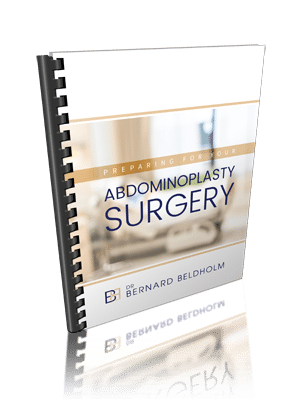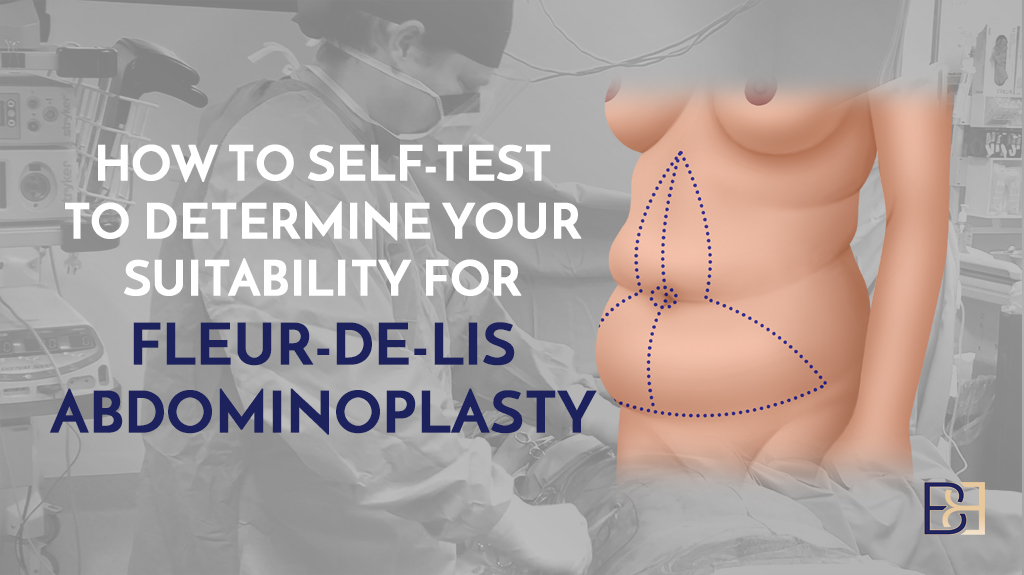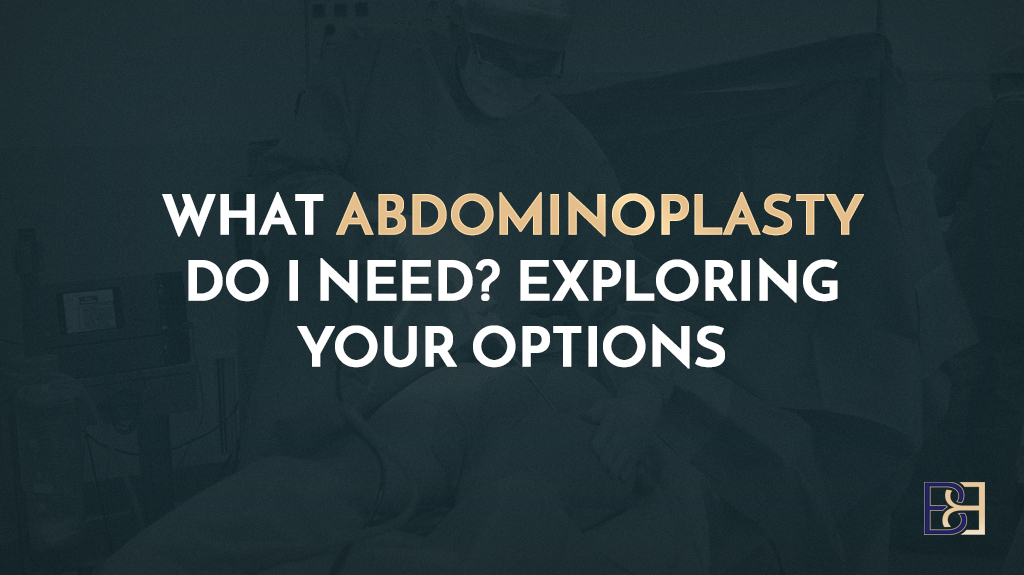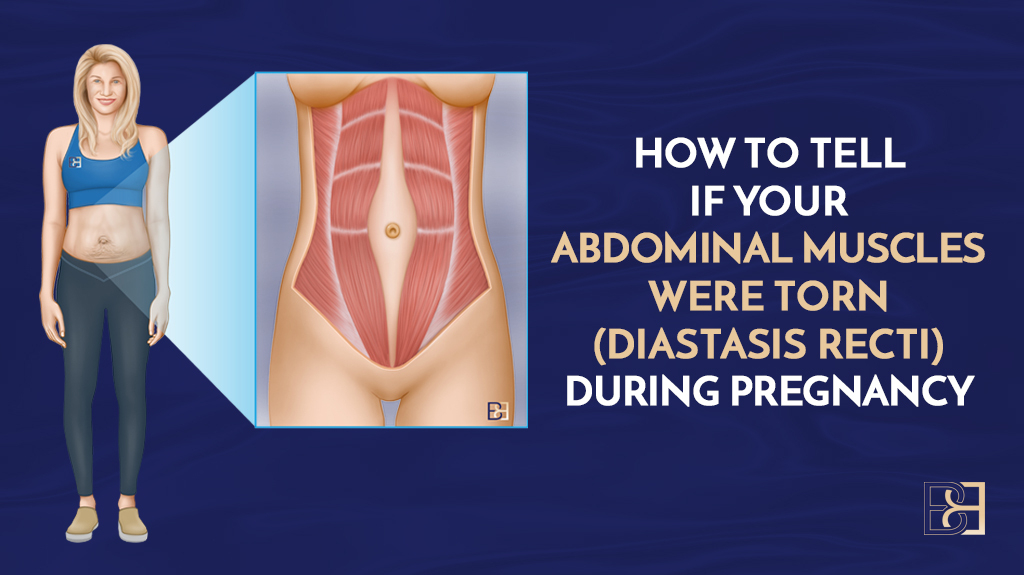Development of outer scarring is normal after a surgical procedure, including Fleur-de-Lis abdominoplasty, and this calls for no alarm. There are cases, however, where the patient may develop abnormal scarring, necessitating additional attention.
Outer scarring is standard after Fleur-de-Lis abdominoplasty, resulting in expected, less visible, and somewhat fewer scars. Because most clients’ main aim for undergoing Fleur-de-Lis surgery is to elevate their abdomen’s appearance, the presence of outer scarring that is thick, raised, pigmented, and pronounced can be quite devastating to the patient as well as the surgeon.
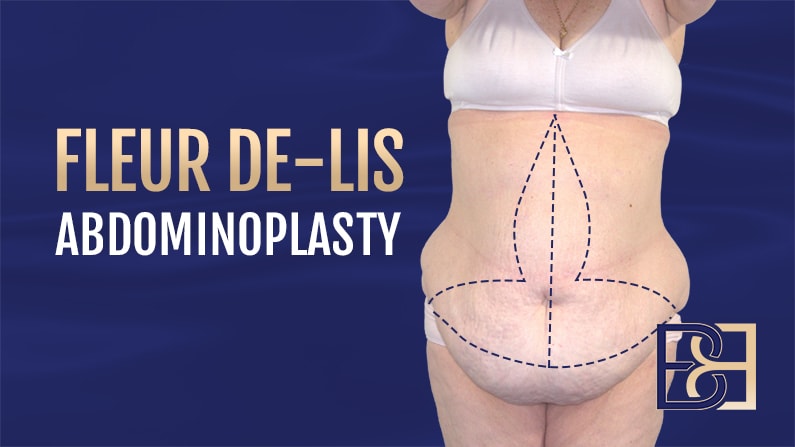
Book your appointment online now
Therefore, reducing the risk of outer scars should be a top priority after Fleur-de-Lis surgery. Before undergoing Fleur-de-Lis abdominoplasty, let me walk you through ways to optimise scar healing and reducing the risk of abnormal scars after the surgery. In addition, I’ll share the treatment options for abnormal scarring and mention that Fleur-de-Lis abdominoplasty is not a replacement for weight loss. It is a post-weight loss method that removes excess skin and accompanying fatty tissue that occurs after substantial weight loss.
Incisions During Fleur-de-Lis Abdominoplasty
Traditional abdominoplasty procedures involve a standard horizontal incision, extending from hip-to-hip. However, Fleur-de-Lis abdominoplasty involves a unique set of two incisions. One incision runs horizontally, like a standard abdominoplasty incision, and the other incision runs vertically from the mons pubis (groin region) along the midline to a little past the umbilicus. The incisions meet at the pubis, offering enough room for the surgeon to focus on skin laxity in the lower and upper abdomen. The incisions, and therefore the resulting scars, appear as an inverted “T”.
Let’s look at the two incisions in detail to help you better understand what to expect during the tummy tuck (Abdominoplasty) surgery.
Horizontal incision
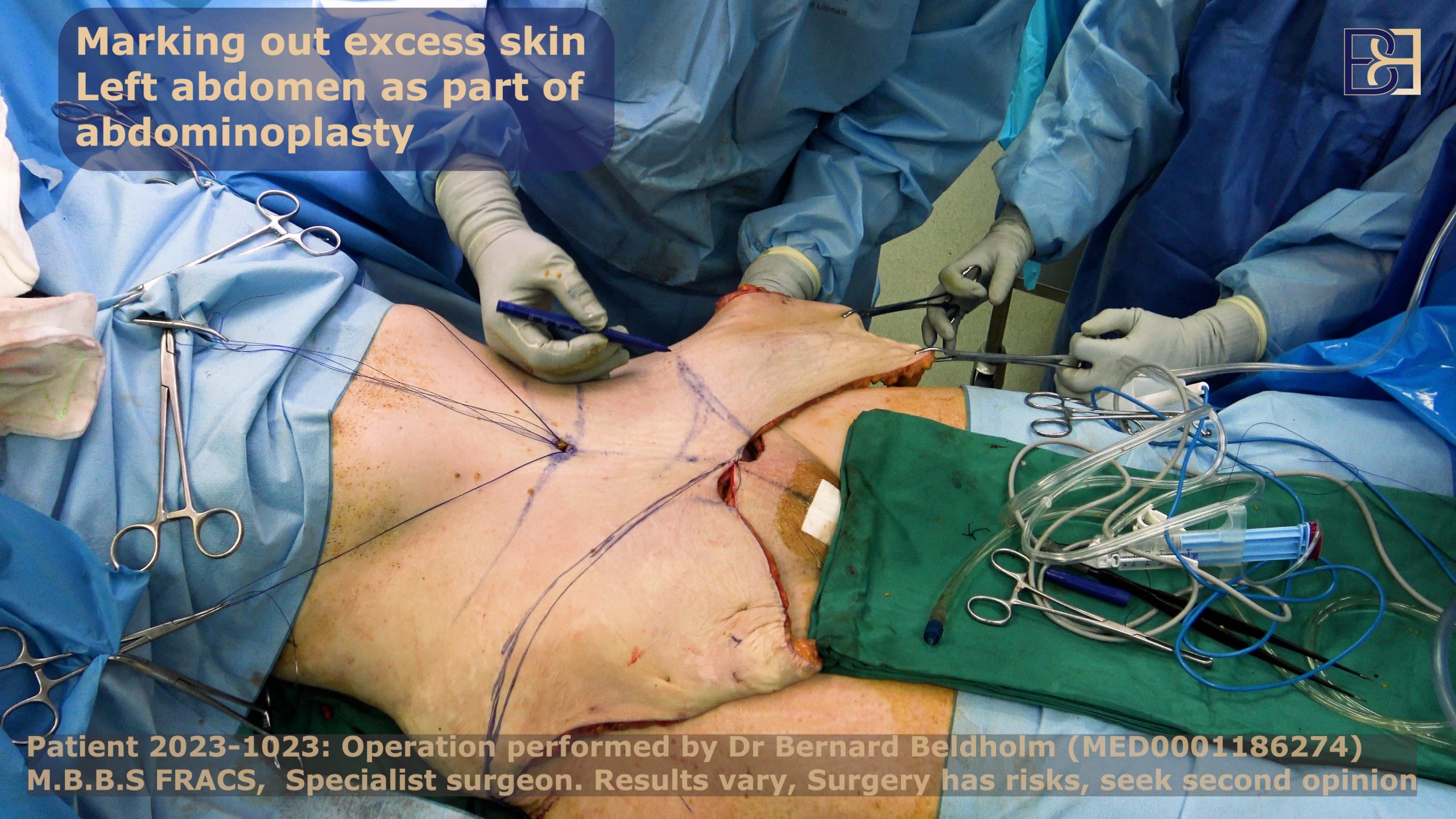
The horizontal incision is like a C-section or traditional abdominoplasty incision made along the waistline, just above the pubis. The incision’s length varies from patient-to-patient, depending on how much excess skin and fat needs to be removed.
To determine the amount of excess skin tissue to remove, I usually use the “pinch method”. The pinch method is a technique used to assess and determine the amount of excess skin tissue that should be removed during the procedure. I do this by pinching the loose skin in the area of concern to evaluate its elasticity and the extent of skin tissue. In addition, I ensure the Fascia of Scarpa is preserved. Preserving Scarpa Fascia conserves the nerves, lymphatics, and blood flow, reducing the risk of lymphatic fluid accumulation and hence the use of surgical drains. I will provide pain medication to prevent severe pain. It also reduces the risk of excess scarring and scar complications.
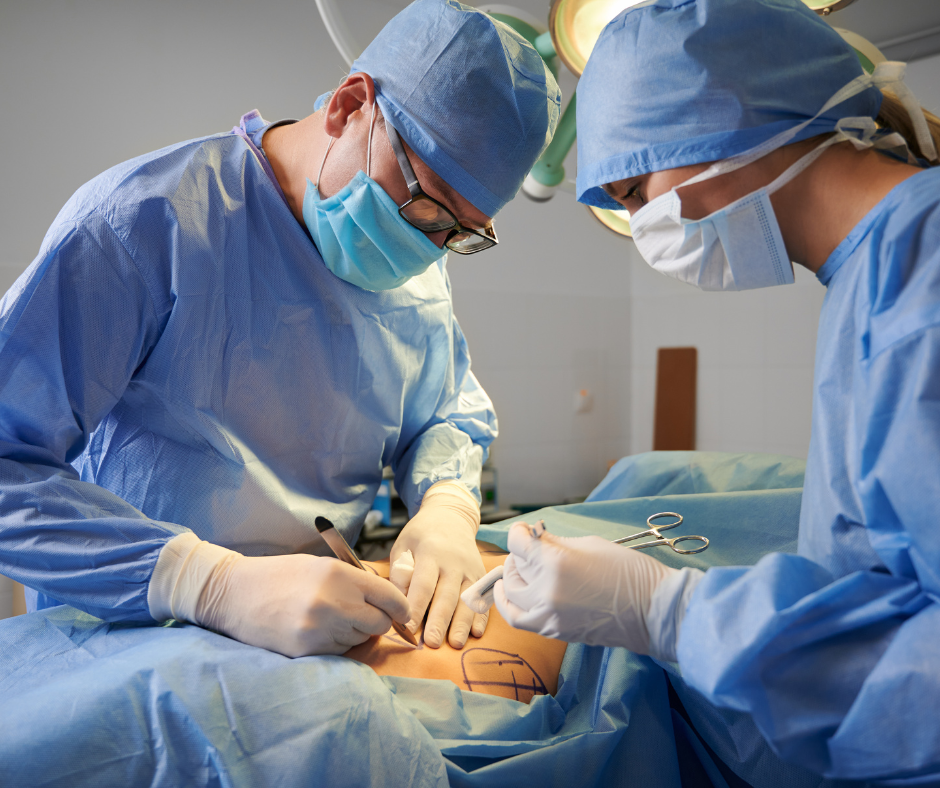
Vertical Incision
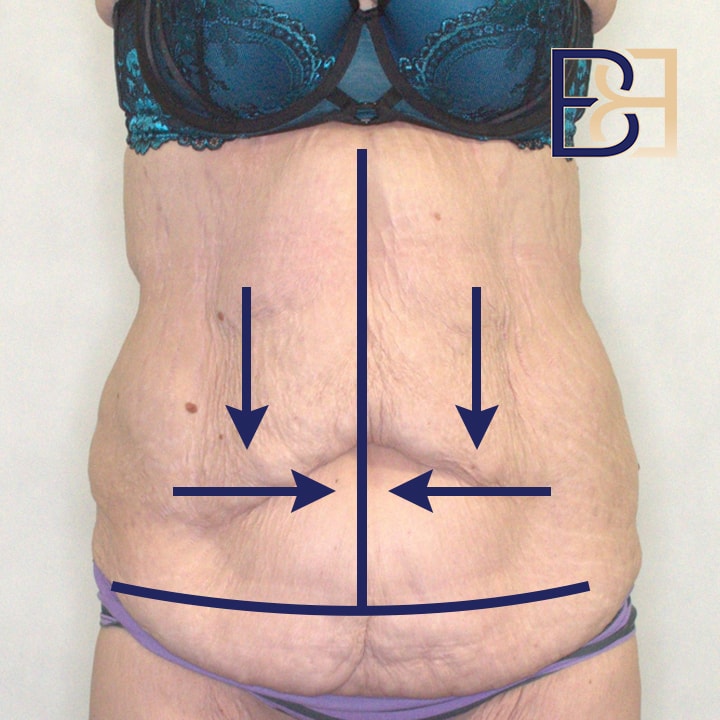
The vertical incision gives the procedure its uniqueness. The incision runs upwards from the pubis along the midline. The vertical incision’s length depends on the amount of vertical skin laxity in the upper abdominal skin. The two common lengths of the vertical incision are below the umbilicus or above the umbilicus.
I use this incision to perform diastasis recti (separated abdominal muscles) repair using a V-Loc suture during this process. The suture attaches to the tissues, eliminating knotting common with standard sutures. This ensures you don’t feel or see the sutures beneath your skin.
After I remove excess skin and fat and repair the separated abdominal muscles, I close the incision using absorbable sutures. I also use ARTISS tissue glue to seal the incision, reducing the risk of seroma formation and opening of the incision.
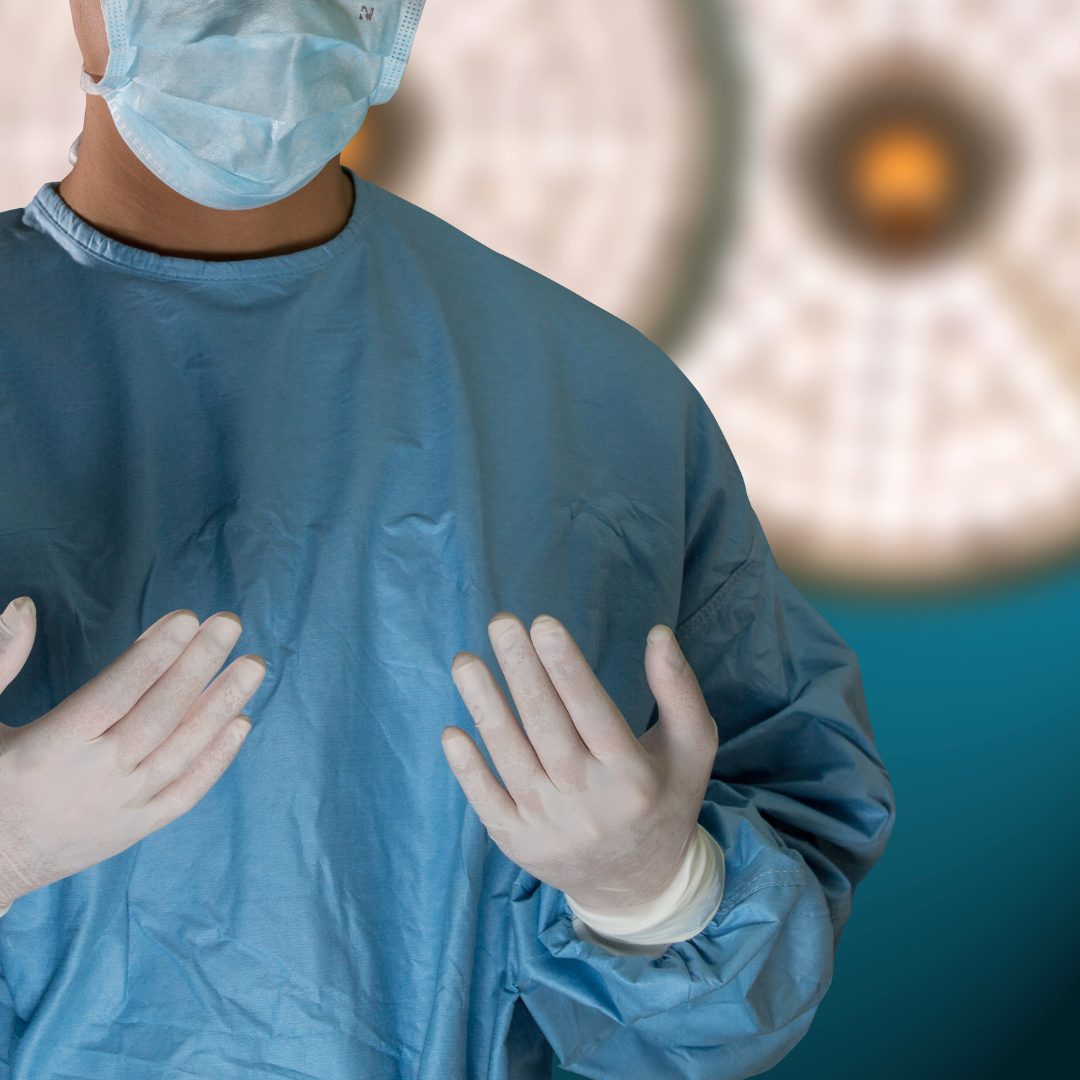
Understanding Scar-Related Risks
Every surgical procedure results in scarring. The scars fade with time, depending on the individual, and become less conspicuous. However, there’s also a risk that you can develop excess scarring after a surgical procedure, including Fleur-de-Lis surgery. Excess abnormal scarring can be devastating to patients. A study on scarring after surgery notes, “[u]nfavourable scarring is not uncommon following cosmetic surgery; the incidence can vary from 5% after breast augmentation to as high as 8% after abdominoplasty.” The causes for abnormal scarring range from the patient’s predisposition to abnormal scarring to postsurgical complications like wound dehiscence, postoperative infection, and tissue necrosis.
Abnormal scarring can cause psychological, physical, and financial distress to the patient. However, you should note that it requires a team effort between the patient and the surgeon to reducing the risks of poor scarring.
Abnormal Scarring After Fleur-de-Lis Abdominoplasty
Abnormal scarring may manifest differently in each individual. I always advise my patients to watch out for abnormal scar healing and notify me immediately for specialised treatment. I also advise my patients on how to correct abdominal abnormalities.
Some of the common types of abnormal scars include:
Hypertrophic Scars
These wide, thick, and raised scars that appear red or pinkish develop on the incision region due to increased collagen around the site. Normal collagen levels result in normal scars, while increased collagen levels result in these raised scars. The body produces collagen fibres to help repair damaged skin. Increased collagen at the incision site mainly results from increased tension on the incisions.
In addition to increased tension on the wound, systemic inflammation is the other main cause of hypertrophic scarring. In addition, repeated traumatic exposure increases the risk of developing hypertrophic scars.
Hypertrophic scars mainly develop on sites likely to experience increased skin tension and are unlikely to occur in areas with minimal skin tension. These regions include the chest, upper arms, and back. The scars may also develop in bony areas that have soft-tissue prominence.
Keloids
Keloids are severe occurrences of hypertrophic scars and appear raised, wide, and ridged, mostly reddish or purplish. However, unlike hypertrophic scars that develop on the incision region, keloids spread past the incision region.
Keloids may develop a few months after surgery or years later. The common regions of their occurrence, like hypertrophic scars, are regions likely to experience increased skin tension, such as the chest, back, upper arms, and bony areas that have soft-tissue prominence.
Infection
Wound infection mainly results from bacterial contamination. It’s among the most common complications following an abdominoplasty procedure, with an occurrence rate of 1%-3.8%. The common symptoms of wound infections include soreness, tenderness, erythema (excess redness), oedema, and high temperatures on the wound. There is an increased rate of infections in underweight and obese patients, this why it’s important for patients should maintain a stable weight.
Scar Dehiscence
Also referred to as wound separation or wound breakdown, scar dehiscence is the reopening of the wound. The main cause of wound dehiscence is increased pressure on the wound that causes a break in the sutures. Therefore, you should always avoid exerting pressure on the wound after Fleur-de-Lis surgery. Other causes include poor suturing technique and reduced blood flow to the wound.
Contracture
Contracture occurs when the scar appears pulled and stretched. These scars are also referred to as tethered scars and are common in patients with reduced fat deposits between the dermis and the muscle. Their main occurrence is due to the body’s failure to repair the fatty layer beneath the wound.
Pigmentation Changes
You may develop hypopigmented or hyperpigmented scarring when there are scar pigmentation changes. Pigmentation complications often result from surgical procedures, skin trauma, or skin burns.
Hyperpigmentation occurs when the scar gets darker than the surrounding skin. The condition results from the body producing excess amounts of melanin on the scar in response to exogenous or endogenous inflammatory conditions.
Hypopigmentation occurs when the scar lightens compared to the skin around it. This occurs because the body produces less amounts of melanin on the scar making it appear pale and whitish. This, however, doesn’t mean the scar completely lacks melanin.
Asymmetry
Scar asymmetry is a rare cause of dissatisfaction following an abdominoplasty procedure. Scar asymmetry manifestation is where the scar appears crooked and lacks symmetry. The main cause of scar asymmetry is an uneven incision and postsurgical complications such as chronic seroma.
Incision Healing Complications
Fleur-de-Lis surgery results in increased trauma on the deeper skin layers. The increased trauma may cause complications during wound healing. The common complications are haematoma, umbilicus necrosis, dog ears, skin necrosis, and seroma.
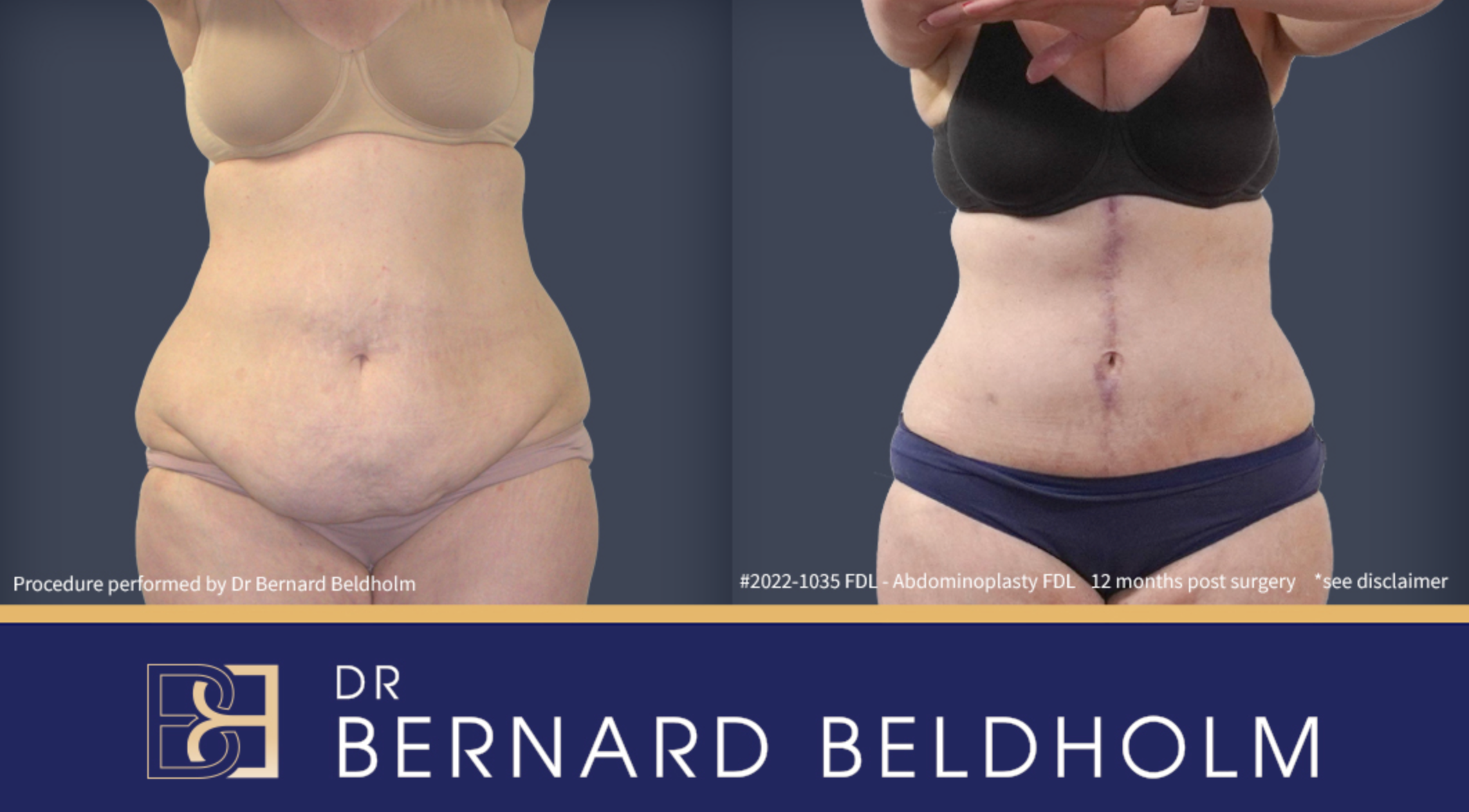
Disclaimer: Operation performed by Dr Bernard Beldholm. Adult content, surgery has risks; individual results vary, seek 2nd opinion. Please see the full disclaimer.
Reducing the Risk of Outer Scarring Following FDL Surgery
It is important to understand that you cannot fully prevent scarring after any surgical procedure. However, you can reduce the risk of abnormal scarring and the visibility of the scars.
Reducing the risk of outer scars following Fleur-de-Lis abdominoplasty procedure involves surgical technique, optimal wound care, and nutritional supplementation. These can be categorised as preoperative preparation and postoperative care. Treatments also play a crucial role in reducing and treating excess scarring.
Preoperative Preparation
Before Fleur-de-Lis surgery, you must be physically and psychologically prepared. To do this, you must understand and accept the risk of scarring after Fleur-de-Lis abdominoplasty and be ready to reduce the risk. The primary way to do this is by choosing an experienced and skilled specialist surgeon like myself and discussing the risk of scarring and how to reduce it.
Discussing Scar Strategies
After choosing a specialist surgeon, the next step is booking a consultation. During the consultation, I always discuss all the risks involved following Fleur-de-Lis abdominoplasty, including scarring. I will then outline how I intend to reduce the risks and outline your role as well. These include the Dos and Don’ts before surgery, such as avoiding smoking and the kind of medicines to use.
Postoperative Care
After the procedure, I will provide you with instructions to follow during recovery. They are similar to preoperative instructions but factor in wound healing. In addition, I advise my patients to look for any abnormal signs on the wound and contact me immediately. Some of the postoperative instructions include:
- Quitting smoking: this should be done at least six weeks pre/post-surgery.
- Wearing supportive garments for a minimum of six weeks after surgery.
- Avoiding exerting excess pressure on the incision.
- Following incision care instructions, including keeping it clean.
- Staying hydrated
- Wearing loose-fitting and comfortable clothing.
- Protecting the incision from direct sunlight.
- Attending follow-up appointments and contacting your surgeon when you notice any wound complications.
- Avoid gaining weight or any significant fluctuations
Adjunctive Treatments
- Scar Massage: This appropriate exercise program helps promote blood flow to the scar and realign the collagen fibres around the scar to reduce scar rigidity. Therefore, soft massages on the scar help with scar healing and reduce abnormal scarring. However, you should not massage the scar too early to avoid exerting excess pressure on the incisions. Additionally, always seek help from a qualified practitioner or instructions from your surgeon.
- Silicone Sheets or Gels: This treatment option involves using “self-adhesive medical silicone sheets” to protect the skin and retain moisture. This ensures the scar is well hydrated, optimising the healing process and reducing abnormal scarring. A PubMed study shows that “[s]ilicone gel products are an effective non-invasive treatment to prevent formation of pathologic scars and ** mature scars.”
- Topical Treatments: These help to moisturise the skin, softening the scars. Some common topical treatments include vitamin E, vitamin D, antibiotic ointment, cocoa butter, petroleum jelly, and scar cream.
- Compression Garments: These garments exert pressure on the incision. The pressure helps promote blood flow and reduce fluid accumulation, reducing bruising and swelling and enhancing scar recovery. I recommend wearing a compression garment for a minimum of 6 weeks after surgery.
Medical Interventions
- Laser Therapy: This involves penetrating the skin layers with lasers. Laser therapy aids in blood circulation and promotes the production of collagen fibres. Collagen fibres are crucial for skin repair. Laser therapy can be used to prevent or treat abnormal scarring.
- Steroid Injections: The surgeon injects steroids into the scar tissue. Steroid injections can be injected immediately or days after surgery to prevent or treat abnormal scarring. A study shows that “[t]he use of topical agents and intralesional steroid injections can minimise early scar formation.”
- Pressure Therapy: The treatment involves wearing pressure garments to exert pressure on the site of the incision. Pressure therapy limits fibroblast activity on the scar, reducing abnormal scarring.
- Microneedling: This treatment uses small needles to poke multiple tiny holes into the skin tissue. Microneedling promotes collagen production, which helps in scar healing and reduces scar visibility. It is also called “collagen induction therapy.”
Dr. Beldholm’s Advice on Outer Scarring Following Fleur-de-Lis Abdominoplasty

If you’re undergoing Fleur-de-Lis abdominoplasty, it’s important to understand that scarring is normal. The scars fade after some time and become less visible. However, there’s a risk of excessive and abnormal scarring after the procedure.
Abnormal scarring following abdominoplasty varies from patient-to-patient and may affect the procedure’s results, so you must do what you can to reducing this risk. This requires conscious effort from both the patient and the specialist surgeon.
Book a consultation with me today to learn more about this major surgery.
References
- Tran, B., Wu, J. J., Ratner, D., & Han, G. (2020). Topical Scar Treatment Products for Wounds: A Systematic Review. Dermatologic surgery : official publication for American Society for Dermatologic Surgery [et al.], 46(12), 1564–1571.
- Friedman, T., O’Brien Coon, D., Michaels V, J., Purnell, C., Hur, S., Harris, D. N., & Rubin, J. P. (2010). Fleur-de-Lis abdominoplasty: a safe alternative to traditional abdominoplasty for the massive weight loss patient. Plastic and reconstructive surgery, 125(5), 1525–1535.
- Wallach S. G. (2005). Abdominal region contour surgery for the massive weight loss patient: the fleur-de-lis approach. Aesthetic surgery journal, 25(5), 454–465.
- Repo, O., Oranges, C. M., di Summa, P. G., Uusalo, P., Anttinen, M., & Giordano, S. (2023). Scarpa Fascia Preservation to Reduce Seroma Rate on Massive Weight Loss Patients Undergoing Abdominoplasty: A Comparative Study. Journal of clinical medicine, 12(2), 636.
- Monteiro, I. A., de Sousa Barros, A., & Costa-Ferreira, A. (2023). Postbariatric Abdominoplasty: A Comparative Study on Scarpa Fascia Preservation Versus Classical Technique. Aesthetic plastic surgery, 47(6), 2511–2524.
- Chambers, A. (2020b). Management of scarring following aesthetic surgery. In Springer eBooks (pp. 385–395).
- Ekstein, S. F., Wyles, S. P., Moran, S. L., & Meves, A. (2021). Keloids: a review of therapeutic management. International journal of dermatology, 60(6), 661–671.
- McGinty, S., & Siddiqui, W. J. (2023). Keloid. In StatPearls. StatPearls Publishing.
- Vitagliano, T., Garieri, P., Lascala, L., Ferro, Y., Doldo, P., Pujia, R., Pujia, A., Montalcini, T., Greco, M., & Mazza, E. (2023). Preparing patients for cosmetic surgery and aesthetic cosmetic procedures: Ensuring an optimal nutritional status for successful results. Nutrients, 15(2), 352.
- Chen, M. A., & Davidson, T. M. (2005). Scar management: prevention and treatment strategies. Current opinion in otolaryngology & head and neck surgery, 13(4), 242–247.
- Khansa, I., Harrison, B., & Janis, J. E. (2016). Evidence-Based Scar Management: How to ** Results with Technique and Technology. Plastic and reconstructive surgery, 138(3 Suppl), 165S–178S.

